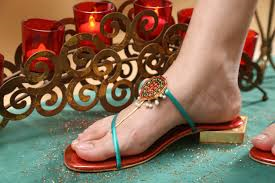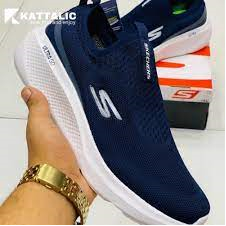High-quality Top Shoes Brands In Pakistan offer more than just stability and support for our feet. They also aid in the healing process and contribute to better foot health. Additionally, reputable shoe brands can help align the back, hips, knees, ankles, and feet, leading to improved posture and corrected gait. While numerous shoe brands are available in the market, it is crucial to find a brand that surpasses all your expectations.
Footwear is an essential component that completes and enhances any outfit. Not only do shoes contribute to our overall look, but they also serve a crucial purpose in shielding our feet from extreme temperatures. To ensure optimal support for your feet, it is important to choose shoes that are both flexible and durable
Introduction
Khussa
The time-honoured efficient skills have been blended with most modern
technology to produce highly attractive styles, designs and shapes that are
comfortable and durable and have great universal appeal.
Bata
Bata Shoes.
When it comes to footwear, Bata is among the most well-known and prestigious
shoes in
Whether you’re looking for top-quality
shoes for women, men, or children of all ages, Bata offers a diverse range.
Their stores are conveniently located in major cities across
Servis
Servis a renowned shoe brand in
Customers favor
Servis due to the superior quality and durability of their shoes. The brand is
committed to meeting
This means you can
conveniently order Servis shoes for your entire family, regardless of your
location. The brand also offers a delightful assortment of lace-up oxfords,
dress shoes, and casual footwear in various styles and colors.
Mochari
Mochari is a luxury shoe company in
The color selection and
design of Mochari shoes reflect the rich history and heritage of
The shoes are of exceptional quality,
featuring the latest designs. This popular brand offers a range of versatile
handmade shoes, both casual and formal, suitable for any occasion and can be
paired with various outfits.
Borjan
Borjan is renowned for its exceptional quality
shoes specifically designed for women and its number forth for best shoes
brands in
The brand’s modern and fashionable
designs instill trust and confidence in shoppers. The latest designs and the
softness of Borjan shoes create a feeling of walking on sand, even after being
on your feet for several hours
In
The company offers both traditional and contemporary designs,
encompassing the best of both worlds. This company offers simple yet elegant
designs for every event at reasonable pricing.
Hush Puppies
Hush Puppies, an American shoe business, has a huge and
vehement following in
Hush Puppies is the preferred brand among men in the
Pakistani shoe market in list of top 10 shoes brands in
Hush Puppies shoes are
known for their softness and coziness, making them ideal for long travels. The
brand offers beautiful colors like brown and black, which are perfect choices
for both formal and informal events. You can find Hush Puppies outlets in
several major cities throughout
Men’s shoes are available in many different styles, all of
which are built for maximum comfort. Hush Puppies make comfortable, fluffy
footwear. These sneakers are very comfortable and long-lasting.
Given that it is one of the top shoe
brands in
Nike
Nike, a popular
brand known for its use of luxurious leather, has established outlets in major
cities of
Those who engage in
workouts and running activities find Nike shoes to be an excellent choice.
While Nike shoes may come at a higher price, their impressive quality justifies
the investment. The innovative designs, proper fit, and functional features of
Nike shoes make them a worthy investment. Wearing Nike shoes not only provides
a lively and sophisticated look but also ensures optimal and safe performance
during various activities.
Gucci
Gucci, a renowned international brand, holds significant
popularity in
Gucci offers a wide
variety of shoe options, including herringbone loafers, men’s floral jacquard
loafers, tweed loafers, and classic loafers that are bound to captivate your
heart. Whether you’re in search of casual or formal shoes, such as dresses,
lace-ups, sneakers, or loafers, Gucci provides a range that caters to daily use
while ensuring both comfort and mobility for the wearer.
Metro
As
the name implies, the metro shoe is a leading Pakistani brand, which was
founded in 1986. The shoe store is ISO certified with a vivid vision of dealing
with the demands of society as far as shoes are concerned. In a very short time
period, Metro Shoes has earned a good reputation nationally and
internationally. It is now well recognized in fashion footwear and accessories
all over the country.
Metro is a
well-established shoe brand in
The brand’s remarkable styles, excellent quality, and
reasonable prices make it the top choice among shoe brands in
Whether you seek contemporary
or traditional footwear, Metro can fulfill your requirements. The brand’s
success lies in its commitment to meeting customer needs and targeting the
right market segment. Moreover, Metro shoes are known for their discounted
prices, making them affordable and appealing to customers who desire a
professional yet stylish look.
The
company deals in displaying a large variety of diverse shoes including a range
of fancy shoes, seasonal shoes, formal shoes, part wear shoes and bridal shoes.
Its bridal collection of footwear is amazing! The glue never comes off the
shoes even after wearing it for years and not taking proper care!
Metro Shoes are one
of the finest shoes available in
Levi’s
Levi Strauss is among top shoes brands in
Levi’s offers a
remarkable range of casual and formal shoes at discounted prices. All Levi’s
shoes are known for their comfort and flexibility. The brand excels in
producing top-quality men’s shoes with traditional styles and designs. By
choosing Levi’s, you can effortlessly stay up-to-date with the latest trends
and fashions. Whether you’re spending the day at work or heading out for a
night on the town, Levi’s shoes ensure you’re well-prepared and stylishly
dressed.
J. Shoes
J. shoes, a brand founded by the famous personality
Junaid Jamshed, has made its mark in the Pakistani shoe industry. With prices
starting from 2,500 Pakistani rupees, J.shoes specializes in producing
traditional chappals that cater to the Pakistani audience.
The brand’s shoes are particularly suitable for those who
appreciate and embrace their formal cultural attire. With 100 stores across
Stylo Shoes
Stylo Shoes is renowned for its broad selection and
variety of shoe designs. . Stylo Shoes is renowned for its broad selection and
variety of shoe designs. Stylo, as the name implies, never runs out of style
since it consistently put out the latest fashion statements and trends. As a
result, Stylo is regarded as one of the top female shoe companies in
There are more
options than just shoes for everyday use; you can also discover elegant bridal
gowns and shoes appropriate for weddings, which will make any bride stand out
on her special day. You can also find shoes for children, ensuring that your
little ones follow your sense of style.
IELGY
Recently,
If
you ever see stylish OOTDs(outfit of the day) from bloggers abroad and want to
incorporate such looks into your wardrobe, keep browsing IELGY’s collection you
might find the perfect pair of shoes to add to your cart.
Adidas
No other branch can beat Adidas when it comes to quality,
effortless flair, and practicality. The brand’s sports shoes are among the best
in the market, and its iconic Adidas Superstars are well-known for being the
stylish sneakers everyone wants.
When it comes to engaging in various sports activities,
they are frequently the first preference for many Pakistanis. Adidas is
regarded as one of the top sports shoe manufacturers in
Maazu Shoes
Another growing company in
Because
of this, Maazu is regarded as one of the top 10 men’s shoe companies in
Ndure Shoes
Ndure is a well-known brand of men’s shoes in
There are hundreds of stores situated all across the
country, ensuring comfort at your doorsteps. Although Ndure shoes come in a
range of styles and colours, their casual shoes are among their most well-known
products.
ECS
The company has rapidly turned into a household name, as
you can buy clothing, shoes, bags, accessories, and even fragrances. The
company sells shoes in a variety of fashionable styles, all while keeping their
price at a minimum.
Ehsan Chapel
House abbreviated as ECS took its first step in 1954 in the well-known market
of Anarkali located in the historical city Lahore of Pakistan. The founding
father of this famous brand is Mr. Salman Siddiqui. The store worked hard in
making it famous and reliable among the citizens of
Through
their strong work ethics flexible approaches and trustworthiness, they gain the
love of their customers and now the brand is operational in all the capital
cities of
Skechers
Their footwear is renowned for being of the highest
calibre available. And the level of comfort you experience while donning a pair
of Skechers is unmatched. For this reason, it is one of
Once you own a pair of Skechers sneakers, going back will
be impossible. They have a huge selection that covers a wide range of
requirements and market niches, in short, they have shoes for everyone.
URBAN SOLE
Urban
sole is a leading Pakistani brand dealing in shoes has started its journey with
the first step taken in the year1998, when the company was fashioned as a
national brand with an international stance so to say. The name and the
shoe styles are all western and a nonprofessional cannot think of it as
Pakistani brand just by looking at outlook. That is the vision behind it,
beating the international standard with their own mindset.
Urban
Sole has matured itself to countrywide retail webwork of over 40 stores dealing
in retail, along with a wholesale network that springs to over 300
self-governing wholesale distribution stations. The brand exports its supplies
to a number of countries including
The
urban sole has recently extended its business into international markets,
providing them with the best quality leather and comfort level. The quality,
comfort, and finest quality materials, along with the assurance of innovation
and new ideas are the key factors in making Urban Sole a success.
Urban
sole shoes are tailored to be up-to-the-minute and up-to-date with the modern
fashion inclinations, offering its customer a wide selection of sophisticated,
comfortable, and casual shoes thoroughly designed with hand-sewn artisanship by
the hard-working factory workers and the handpicked material to make sure that
each shoe is a masterwork. Urban Sole shoes are comfortable to wear but for
just two years, after that, the soles are pressed.
Problems feed by the Leather and Shoe industry in Pakistan
Leather manufacturing sector in
The duties on the import of tanneries related
machinery need to be further reduced. The machinery made locally is
technologically inferior which not only increases the cost of production but
restrains from developing at par with the international market.
State Bank of Pakistan
The State Bank of
Pakistan’s (SBP) Annual Report 2020-21 shows that Pakistan’s leather industry
contracted significantly in FY21 which demands serious attention of the
policymakers.
Although the leather
industry of
successive governments in
Data released by
International Trade Centre (ITC) showed that
Data from the Pakistan
Bureau of Statistics (PBS) revealed that exports of leather and leather goods
fell from $918.13 million in FY17 to $833.19 million in FY21. The sector’s
earnings moved from $765.35 million in FY20 to $833.19 million in FY21, rising
by 8.86%. However, this growth was witnessed primarily due to low base of the
preceding year.
The recent growth observed
in leather exports was seen due to two reasons. First, there was an increase in
the average unit price per square meter of tanned leather (from $10.89 in FY20
to $12.9 in FY21) and second, export volumes registered a rise. Outward
shipments of leather apparel and clothing surged 28.54% while export of gloves
and footwear increased by 36.5% and 21.9% respectively.
Had the production of
tanned leather not dropped by 25.7% alongside a reduction in values of other
leather goods,
The huge difference between
export of tanned leather in FY20 and FY21 demands some explanation. The
Factors that impeded exports
The main reasons behind
this are absence of swift collection of fresh hides and skins with modern
preservation techniques and lack of skilled and trained labour for primary
storage to avoid spoilage. Tanneries have to upgrade their technologies. They
should also consider establishment of Combined Effluent Treatment Plants
(CETPs) to mitigate environmental degradation which would help them gain
certifications of leather products from international accredited agencies like
Leather Working Group (LWG).
According to ITC trade
map’s ranking of leather product exports, two of our neighbors are among top
ten exporters in the world.
Based on the ITC trade map,
total global export value of the commodity stood at $186.5 billion which means
that more than one-third of the global exports are covered by these two
countries whereas
A country rich in livestock
should have a seamless and high performing meat and leather industries.
Apart from striving to
obtain high yield of finished leather, many more steps need to be taken. Since
fashionable leather goods including handbag, shoes, jewelry and watches are
considered high-end value-added items, establishment of new fashion designing
institutes across the country is necessary to increase export earnings through
these items. Relying only on two major institutes National Institute of Leather
Technology (NILT) and Leather Product Development Institute (LPDI) to seek a
greater share in the global export pie is not good.
The
leather industry of
Leather, rubber, plastic and textile are most
common materials used in manufacturing of footwear exported from
The
exporters are fetching best prices for their products in the international
market. There are several challenges for the industry as well. The European
importers are more interested in those footwear products which materials are no
more a threat to the environment and can be recycled. The availability of such
type of material supply, training and development of manpower who can implement
international quality standards are major issue for the industry.
The results show that for every one percent
increase in years of qualification there may be an increase of 0.345 percent in
value of footwear export. The results show that for every one percent increase
in years of export experience there may be an increase of 0.418 percent in
value of footwear export. The dependence of footwear export on average raw
material cost per pair has a negative relation which means for every one
percent increase in average raw material cost per pair decreases the footwear
export in value by 0.280 percent. The relevant importance of energy crisis is
very high because results depict that for every one percent increase in energy
the export of footwear would be decreased by 1.090 percent in value of footwear
export.
The
participation in international trade exhibitions is also a significant variable
which shows that for every one percent increase in international trade
participation there would be an increase of footwear export by 0.326 percent in
export value. The focus on personal design collections has a negative impact on
footwear export. It is depicted that for every one percent increase in focusing
personal design collections decreases the footwear export by 0.152 percent in
value of export. Discussion and Limitations One of
the major factors affecting footwear export of
one percent increase in average raw material
cost per pair and focus on personal design collections decrease footwear export
in value by 0.280 and 0.152 percent respectively. It was also found that one
percent increase in technical manufacturing expertise would increase footwear
export by 0.175 percent. The variable of focusing personal design collections
shows a negative relationship with footwear export and it came out to be
-0.152. The reason is that almost all the footwear manufacturers get their
export orders provided with compete design and specification instructions from
the foreign buyers. The manufacturers need to manufacture as per buyers demand.
So just relying on personal design collections and expecting that it is enough
to get export orders is not significant for footwear export
The results of the collected data indicate
that which areas to be focused more by the policy and strategy makers for the
improvement of footwear export in
Statistics in brief
In 2023,
the revenue in
Pakistan produces a wide range of
footwear to cater for the needs of a variety of customers – -men and women,
boys and girls, pedestrians and joggers, business executives and bureaucrats,
office goers and hawkers, squash and hockey players, cricketers and
footballers, mountaineers and foresters, policemen and soldiers, specially
designed footwear for the disabled, in fact, all those who need footwear
according to their choice and special requirements. The large variety of
Footwear exports
From July 2022 through February
2023, the Asian country exported a total of 16.4 million pairs of
shoes, generating revenue of 124.5 million US dollars. These
figures indicate a growth of 37.80% in volume and 19.99% in value, on a
comparable basis to the same period of the previous year.
In the first eight months of the current year,
The other
footwear segment also registered a significant increase in
this period, shipping 8.95 million pairs, worth 22.65 million US dollars, up by
33.98% in volume and 14.35% in value, as compared to the prior year. On
the opposite trajectory, in this period, the canvas
footwear segment recorded a decline of 7.75% in
volume (80 thousand pairs) and 24.64% in value (540 million US dollars),
year-over-year.
Quality control
The footwear industry in
Conclusion
This
sector can contribute far ahead of its existing capacity in foreign earnings.
The gap is very vast for researchers specially working in strategy and policy
making. This industrial sector really needs research based support because
there are no empirical researches conducted in this area.





















